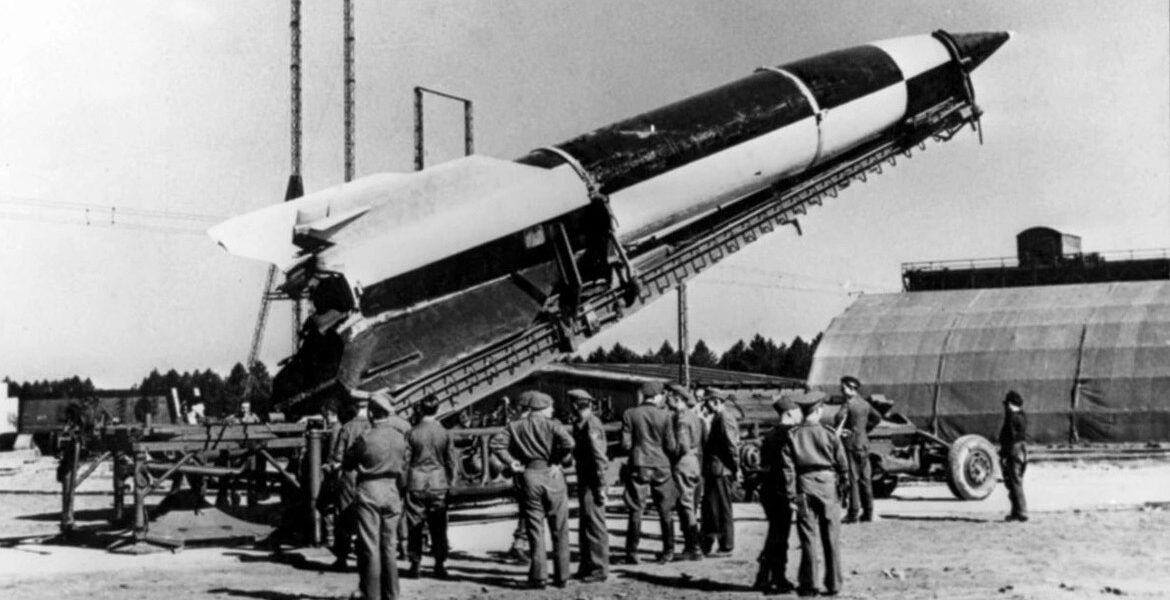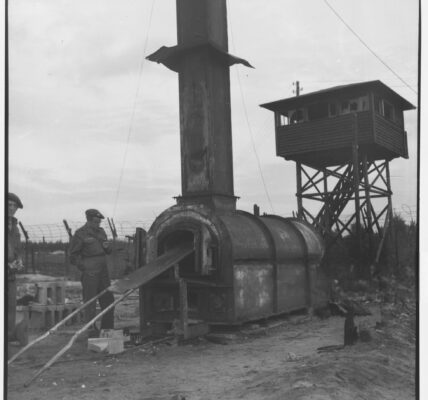- Homepage
- Uncategorized
- Germany’s V2 rocket – The dangerous beginning of the modern rocket age _de35
Germany’s V2 rocket – The dangerous beginning of the modern rocket age _de35

In the autumn of 1944, as World War II approached its climax and soon its end, a weapon that would make history was launched from Peenemünde on the Baltic Sea – the V2 rocket . Officially called “Vengeance Weapon 2”, it was the world’s first ballistic missile to ever reach space before destroying its target on Earth at supersonic speed.
The V2 was no ordinary weapon of war. It was the product of years of research conducted by some of the brightest minds of the time – among them Wernher von Braun , a young German engineer whose name would later play a central role in the American space program. In Peenemünde, a team of scientists, technicians, and engineers was assembled to create a “weapon of the future” – something that would turn the tide of the war in Germany’s favor.
Standing 14 meters tall, weighing over 12 tons, and powered by a liquid-fueled engine that generated more than 25 tons of thrust, the V-2 was far ahead of its time. Upon launch, it broke the sound barrier, soared to an altitude of over 80 kilometers – briefly entering space – and then plummeted at a near-vertical angle toward its target. Its speed: over 5,000 kilometers per hour. For its time, this was a technological sensation – but also a terrifying weapon.
Between September 1944 and March 1945, over 3,000 V-2 rockets were launched, primarily at London , Antwerp , and other Allied cities. Thousands of civilians were killed. The worst part: the victims never saw the rocket coming. There was no wailing like with bombs, no warning sirens—just a sudden explosion, a flash, and then it was all over.
But the V2 was not only a symbol of horror, but also the beginning of a new era – rocket and space technology . The scientific findings from Peenemünde formed the basis for what later led to the conquest of space. After the war, many of the leading German scientists were recruited by the Allies.
The Americans launched Operation Paperclip , bringing over 1,600 German engineers and scientists to the USA – including Wernher von Braun. He later became known as the father of the American Saturn V rocket , which put the first humans on the moon in 1969. On the other hand, the Soviet Union also used German technology to build its own rocket program – which ultimately led to the development of the legendary Sputnik rocket.
But technological progress came at a high price. The V2 rockets were not produced in gleaming laboratories, but in the underground tunnels of Mittelbau-Dora , a subcamp of the Buchenwald concentration camp. There, tens of thousands of prisoners toiled under inhumane conditions – many of them dying from exhaustion, hunger, or mistreatment. It is estimated that more people died during the production of the V2 than the weapon itself killed.
This dark side of the project was suppressed for a long time after the war. Only decades later did historians begin to uncover the full extent of the crimes behind the technological achievement. Today, the V2 is considered a technical masterpiece , but also a moral warning : it showed that science and ethics are inextricably linked – and that progress without humanity can be dangerous.
The color photographs that have survived in the archives present a fascinating picture: men in white overalls working on the gleaming rocket bodies, engine test stands ablaze, and the majestic test launches over Peenemünde. But behind each of these images lies the invisible suffering of the forced laborers whose hands built these rockets.
Today, Peenemünde is a museum and memorial . The remains of the launch pads, bunkers, and destroyed facilities still stand – silent witnesses to a time when the line between progress and madness blurred. Visitors from all over the world come here to understand how the dream of space travel was born from the ruins of war.
The V2 was thus both: the latest marvel of the Third Reich and the first step into space. It combined death and the future in a single, breathtaking construction of steel, fire, and human ambition.
When you see the old film footage today – the rocket disappearing in a cloud of smoke and light – it’s hard to decide what you feel: fascination or horror. Perhaps both.
Because the V2 was more than a weapon. It was the beginning of an era in which man touched the sky – and at the same time a reminder that every technological power also bears responsibility.
Related Posts

German prisoners of war in the freezing winter of the Eastern Front – an insight into their harsh fate in 1943 _de55
World War II was not only a global military conflict, but also a human tragedy of immeasurable proportions. One of the most striking episodes of this tragedy was the encirclement…

Shocking discovery: Mountains of shoes in Auschwitz – silent witnesses to an unimaginable crime _de54
Between the faded walls of Auschwitz lies one of the most haunting reminders of the darkest period in human history – a mountain of shoes. Worn, damaged, marked by age…

Captured German soldiers in Stalingrad _de53
They stand in rows. Their uniforms crumpled, their faces gaunt, exhausted, blank. Men who marched with conviction just a few months ago now stand as prisoners…

Archaeological sensation: German soldier remains discovered near Kursk – A silent witness to the Second World War comes to light _de52
This summer, archaeologists and volunteers from a historical research expedition made an extraordinary discovery near the Russian city of Kursk. During excavations on a former battlefield…

In the Shadow of War: Underground Operations in the Second World War _de51
The picture shows a scene that may seem unspectacular at first glance: A group of German soldiers descend a stone staircase, deep into an underground passage…

Berlin 1945 – The Fall of the Third Reich: The War Ends in the Shadow of the Brandenburg Gate _de50
Spring 1945. Berlin – once the proud heart of the German Reich – lies in ruins. Smoke rises from the rubble, houses stand without…




